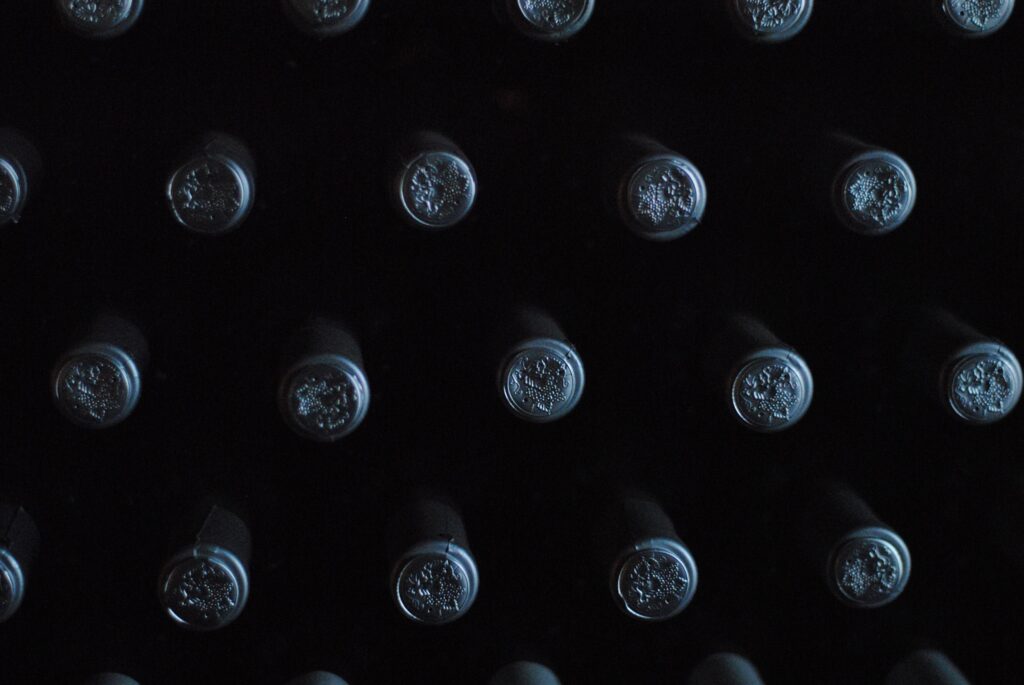If you’re a wine enthusiast or collector, you may have wondered if it’s necessary to invest in a wine fridge with a fan. Well, the answer is not as straightforward as you might think. While a fan can certainly have its benefits, there are other factors to consider when it comes to storing your precious bottles. In this article, we’ll explore the pros and cons of having a wine fridge with a fan, helping you make an informed decision about the best way to preserve and enjoy your favorite wines.

Understanding Wine Fridge Basics
What is a Wine Fridge?
If you are a wine enthusiast or a collector, you probably have realized the importance of proper wine storage. A wine fridge, also known as a wine cooler, is specially designed to provide the ideal conditions for storing and preserving your precious bottles of wine. It is a refrigeration unit that controls both temperature and humidity to ensure that your wines are kept in the optimal environment.
Different types of Wine Fridges
There are several types of wine fridges available in the market, each with its own set of features and advantages. The most common types include thermoelectric cooling systems, compressor-based cooling systems, and absorption cooling systems. These different cooling systems function differently and cater to specific needs and preferences. When choosing a wine fridge, it is essential to consider factors such as the size of your wine collection, available space, and your desired temperature range.
Basic features of Wine Fridges
While wine fridges can vary in size, shape, and capacity, they typically share some basic features that are crucial for wine preservation. These features include temperature controls, humidity management systems, and air circulation. These functions work together to create the optimal conditions for wine storage, ensuring that your wines age gracefully and reach their full potential.
Role of Temperature in Wine preservation
Importance of stable temperature for Wine
Temperature is one of the most critical factors in wine preservation. The stability of temperature plays a vital role in maintaining the quality and taste of wine over time. Fluctuations in temperature can accelerate the aging process, resulting in undesirable changes in the wine’s aroma, flavor, and overall character. It is therefore crucial to store your wine at a stable temperature to ensure optimal aging and preservation.
How temperature fluctuations affect wine quality
Wine is a delicate beverage, and even slight Temperature fluctuations can significantly impact its quality. When exposed to high temperatures, the wine can prematurely age, causing it to lose its complexity and balance. On the other hand, storing wine at low temperatures can hinder its development and slow down the maturation process. Temperature fluctuations can also lead to the expansion and contraction of the wine, causing leaks or pushing the cork out, which ultimately leads to oxidation. Therefore, it is essential to keep your wine at a stable temperature to maintain its integrity and prevent any damage or spoilage.
Ideal temperature ranges for different types of Wine
Different types of wine require different temperature ranges for optimal storage. Generally, the ideal temperature for most types of wine falls between 45 to 65 degrees Fahrenheit (7 to 18 degrees Celsius). However, specific wines have more specific temperature requirements. For example, red wines are typically stored between 55 to 65 degrees Fahrenheit (12 to 18 degrees Celsius) to allow for proper aging and development of flavors. White wines, on the other hand, are best stored at a slightly lower temperature range of 45 to 55 degrees Fahrenheit (7 to 12 degrees Celsius) to maintain their freshness and acidity. It is essential to consult the recommended storage temperature for each type of wine to ensure optimal preservation.
Importance of Humidity control in wine refrigeration
Humidity levels and Wine preservation
While temperature is crucial, humidity also plays a significant role in the preservation of wine. Proper humidity levels are essential to prevent the corks from drying out and to maintain airtight seals. Inadequate humidity can lead to evaporation, resulting in reduced wine volume and potential oxidation. On the other hand, excessive humidity can promote mold growth and label deterioration. Maintaining the correct humidity level in your wine fridge is essential to ensure that your wine remains in pristine condition.
Potential issues due to incorrect humidity levels
Incorrect humidity levels can lead to various issues that can affect the quality and longevity of your wine collection. If the humidity is too low, the corks may dry out, causing them to shrink and allow air to enter the bottle, leading to oxidation. This can result in off-flavors and spoilage of the wine. On the other hand, if the humidity is too high, mold growth becomes a concern. Mold can damage labels, create musty odors, and potentially contaminate the wine. Therefore, maintaining optimal humidity levels within the wine fridge is essential for preserving the integrity and quality of your wines.
How a Wine Fridge maintains humidity
Most wine fridges include humidity control systems to maintain the ideal moisture levels. These systems often incorporate various mechanisms, such as water reservoirs or humidity trays, to release moisture into the air when needed. The fridge’s insulation also plays a role in preventing excessive moisture loss. By carefully controlling the humidity levels, wine fridges ensure that your wines are stored in an environment that maximizes their preservation potential.
Value of Air Circulation in wine refrigeration
Purpose of air circulation in Wine Fridges
Air circulation is a crucial aspect of wine refrigeration that often goes overlooked. Proper air circulation within a wine fridge allows for more consistent temperature distribution. It helps prevent temperature stratification, where warmer or cooler pockets of air can develop within the unit. Additionally, air circulation facilitates the removal of excess moisture and prevents the buildup of odors. Proper airflow within the wine fridge is essential for maintaining optimum storage conditions for your wines.
Role of fans in maintaining consistent circulation
Fans are commonly used in wine fridges to ensure consistent air circulation. They facilitate the movement of air throughout the unit, preventing temperature variances and ensuring that every part of the fridge maintains a consistent temperature. These fans help distribute cool air evenly, preventing hotspots that could negatively impact your wine. By maintaining uniform air circulation, fans contribute to the overall stability and longevity of your wine collection.
Limitations without proper air circulation
Without proper air circulation, several issues can arise that compromise the quality and preservation of your wines. Temperature variations can occur, creating uneven aging and potentially ruining the delicate balance of flavors. Inadequate airflow can result in stagnant air, leading to increased humidity levels and the risk of mold growth. Lack of air circulation can also contribute to the accumulation of odors, negatively impacting the taste and aromas of your wines. Therefore, having a wine fridge with a fan is crucial to ensure consistent air circulation and minimize these potential issues.

Most Common Types of Wine Fridge Cooling Systems
Thermoelectric Cooling System
Thermoelectric cooling systems are commonly found in smaller wine fridges. They operate using the Peltier effect, which uses an electric current to transfer heat from one side of a metal plate to another. This system is known for its quiet operation and energy efficiency. However, thermoelectric coolers may struggle to maintain lower temperatures, making them more suitable for storing wines at temperatures close to room temperature.
Compressor-Based Cooling System
Compressor-based cooling systems are similar to those found in traditional refrigerators. They use a compressor to pressurize and circulate refrigerant, allowing for efficient cooling. Compressor-based wine fridges are highly capable of reaching and maintaining lower temperatures, making them suitable for long-term storage of various types of wines. However, they tend to be noisier and consume more energy compared to thermoelectric coolers.
Absorption Cooling System
The absorption cooling system is less common in wine fridges but is still worth mentioning. This system operates using a heat source, such as propane or natural gas, to drive the cooling process. Though not as widely used, absorption cooling systems offer a unique alternative for wine enthusiasts who prefer off-grid or unconventional cooling methods.
How a Fan Works in a Wine Fridge
Engineering behind fan-based cooling in Wine Fridges
A fan in a wine fridge serves as a vital component in facilitating air circulation. It is usually located within the fridge and works by drawing in the surrounding air and pushing it through the cooling system. This process helps distribute cool air evenly throughout the unit, eliminating temperature variations and ensuring consistent cooling. By assisting in maintaining optimal storage conditions, the fan contributes to the overall longevity and quality of the wines.
Active cooling vs Passive cooling
In wine fridges, fans can be categorized into two types: active cooling and passive cooling. Active cooling fans are directly connected to the cooling system and actively contribute to the circulation of air. They help regulate temperature and prevent any warm areas from developing within the fridge. Passive cooling fans, on the other hand, rely on natural convection to circulate air. They are typically designed to enhance the overall airflow within the unit and do not directly connect to the cooling system. Both active and passive cooling fans play essential roles in maintaining stable conditions within a wine fridge.

Benefits of Having a Wine fridge with a fan
Improvement in temperature control
A wine fridge with a fan offers several benefits, and one of the most significant advantages is improved temperature control. With a fan actively circulating air, temperature variations are minimized, ensuring that every bottle in your collection experiences consistent cooling. This is particularly important for wines that are sensitive to temperature changes, as it helps maintain the ideal storage conditions and allows your wines to age gracefully.
Enhanced odor management
Odor management is another benefit of having a wine fridge with a fan. The continuous circulation of air helps prevent the accumulation of odors within the fridge. Without proper airflow, strong odors can transfer to your wines, compromising their taste and aromas. The fan helps remove any unwanted smells while maintaining a fresh environment that preserves the integrity of your wines.
Increased longevity of Wine
The combination of improved temperature control, humidity management, and air circulation provided by a wine fridge with a fan results in increased longevity for your wines. By maintaining optimal storage conditions, the fan ensures that your wines age at a steady pace, allowing them to develop complex flavors over time. Furthermore, the fan helps prevent any damage or spoilage that may occur due to unstable conditions, ultimately extending the lifespan of your wines and preserving their quality.
Some Best Wine Fridges With a Fan
Review of top-rated Wine Fridges with a fan
There are numerous wine fridges available on the market, each varying in size, capacity, and features. While personal preferences and requirements may influence your choice, we have compiled a list of top-rated wine fridges with a fan to help you make an informed decision. These fridges have been recognized for their excellent performance, reliability, and ability to maintain optimal storage conditions for your wines.
Affordable options for Wine Fridges with a fan
For those on a budget, there are several affordable options available that still offer reliable performance and the benefits of a fan. These wine fridges provide excellent value for money and are ideal for wine enthusiasts who have a smaller collection or limited space. While they may not have all the advanced features of luxury models, they still deliver the necessary temperature control, humidity management, and air circulation to preserve your wines effectively.
Luxury options for Wine Fridges with a fan
If you are looking for the ultimate wine storage experience, several luxury wine fridges are equipped with state-of-the-art features and exquisite designs. These high-end models offer advanced temperature controls, precise humidity management, and superior air circulation systems. While they may come at a higher price point, these luxury wine fridges provide unparalleled performance and aesthetics, ensuring that your wine collection is both beautifully displayed and perfectly preserved.
In conclusion, having a wine fridge with a fan is highly beneficial for wine enthusiasts and collectors. It ensures stable temperature and humidity levels, promotes consistent air circulation, and enhances the overall quality and longevity of your wines. Whether you opt for an affordable option or indulge in a luxury model, a wine fridge with a fan is a valuable investment that allows you to enjoy your wines at their best. Cheers to perfectly stored and preserved wines!
